How to care for a kentia palm – essential advice from an indoor plant expert
These pearls of wisdom will keep your kentia palm dazzling all year round
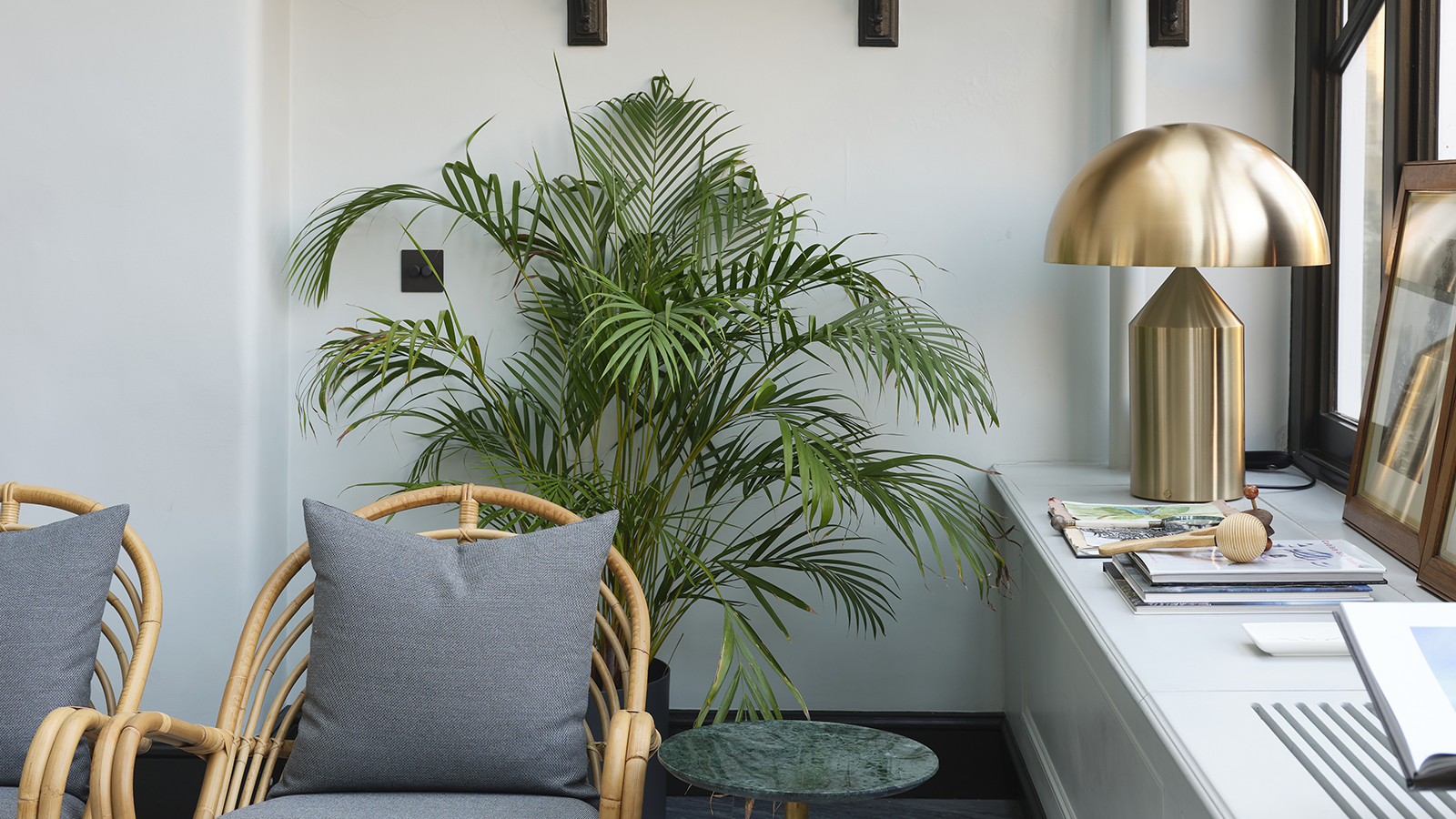

Adding a touch of the tropics to your home is simple with a tall, elegant kentia palm (Howea forsteriana). This low maintenance plant is often recommended for those new to indoor gardening, since it copes well with some shade, lower humidity levels, and cooler temperatures than many other palms.
You can combine it with a wide range of indoor plants, using its foliage as a cool, green backdrop to flowers that like similar conditions such as begonias, orchids and flamingo flowers (Anthurium andraeanum).
'The kentia comes with impeccable credentials, too, and when first introduced to Europe in the 19th century from islands in the South Pacific, it was used to grace the fashionable palm courts of high-class hotels,' says indoor plant expert Zia Allaway.
Here, Zia shares her expert knowledge on how she cares for her kentia palms.
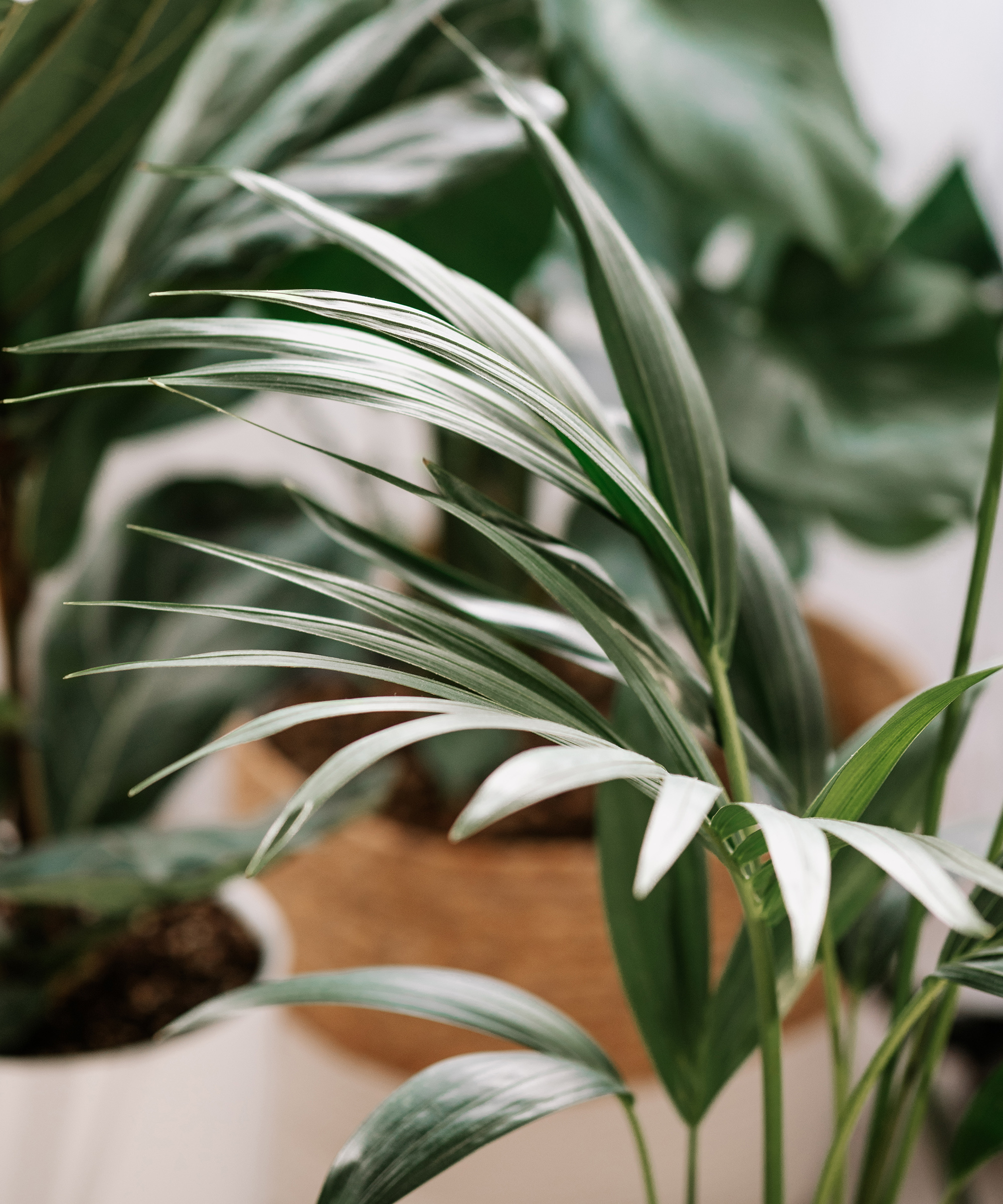
The kentia palm is fairly trouble-free
Kentia palm care essentials
The kentia palm, also known as the sentry palm, thatch palm or paradise palm, needs space to show off its tall, arching stems of dark green, glossy fronds.
'However, it is slow growing, so if you want a tall indoor plant, buy a mature specimen,' says Zia. 'While younger plants can be displayed on a tabletop or sideboard, taller palms are generally best placed on the floor and used to introduce height and structure to an indoor plant display,' she adds.

Zia Allaway is a garden book author, editor, and journalist. She has also written books for the Royal Horticultural Society and Dorling Kindersley publishers, including Eco-Gardening, Compost, Low Maintenance, Practical House Plant Book, Practical Cactus & Succulent Book, Indoor Edible Garden, What Plant Where, and the Encyclopedia of Plants and Flowers.
1. Ensure compost never becomes soggy
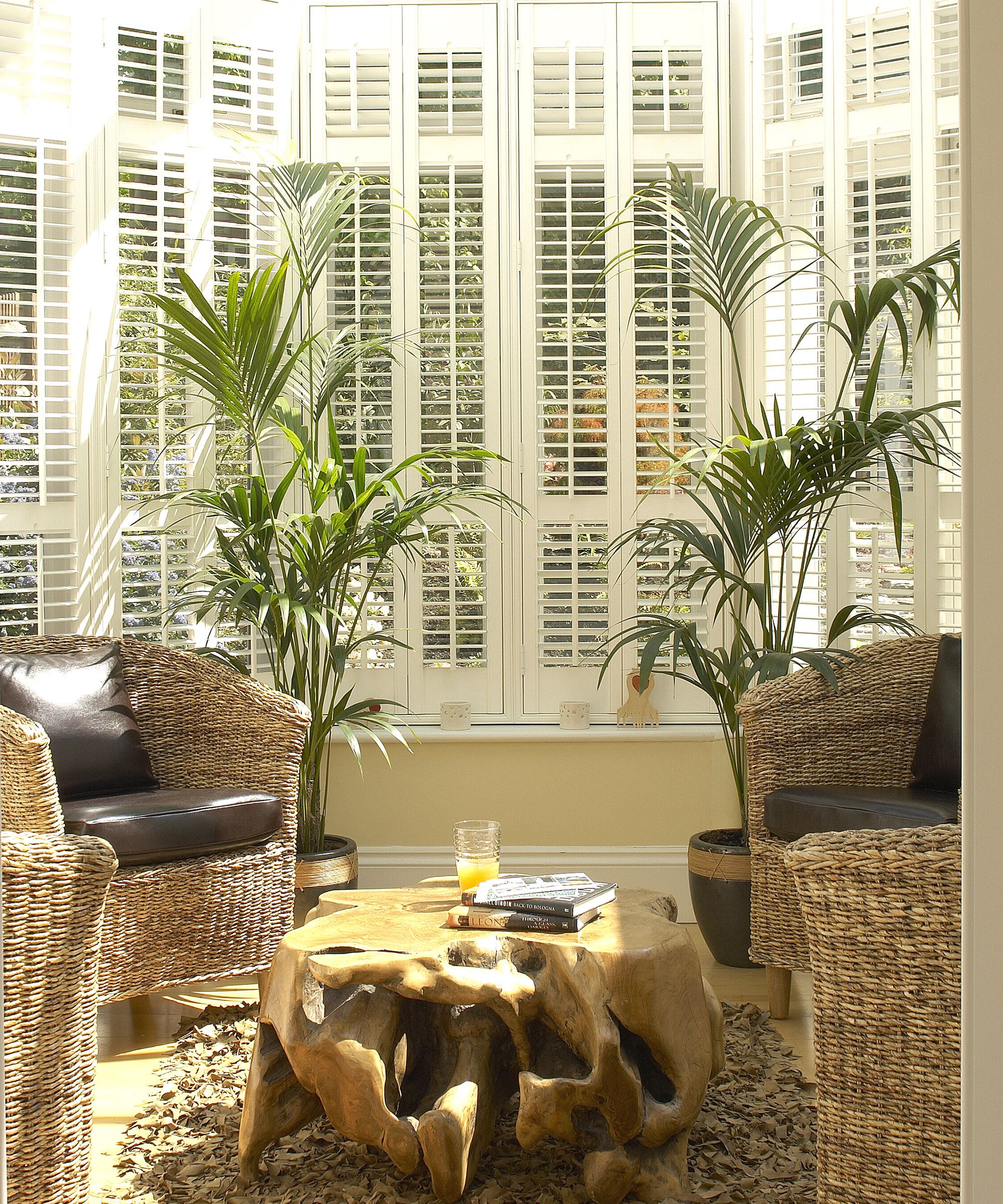
Kentia palms can reach over 10ft in height but they are slow growing so buy big if you want a large plant
Kentias are not particularly thirsty plants and should only be watered when the top of the compost feels dry. Reduce watering in winter so the compost is just moist. Make sure your plant is in a pot with drainage holes in the base, and then place it in a waterproof container or on a deep saucer.
'When watering, check that the compost never becomes soggy and waterlogged, which may lead to root rot,' says Zia. 'If the top of the compost is glistening with moisture a few hours after watering, tip away the excess from its waterproof pot or saucer to prevent disease setting in.
'While Kentia palms can cope with low humidity levels, they will look healthier if you mist the foliage regularly, or set your plant on shallow tray filled with pebbles and topped up with water to create a humid atmosphere around it,' Zia adds.
2. Treat overwatered plants straight away
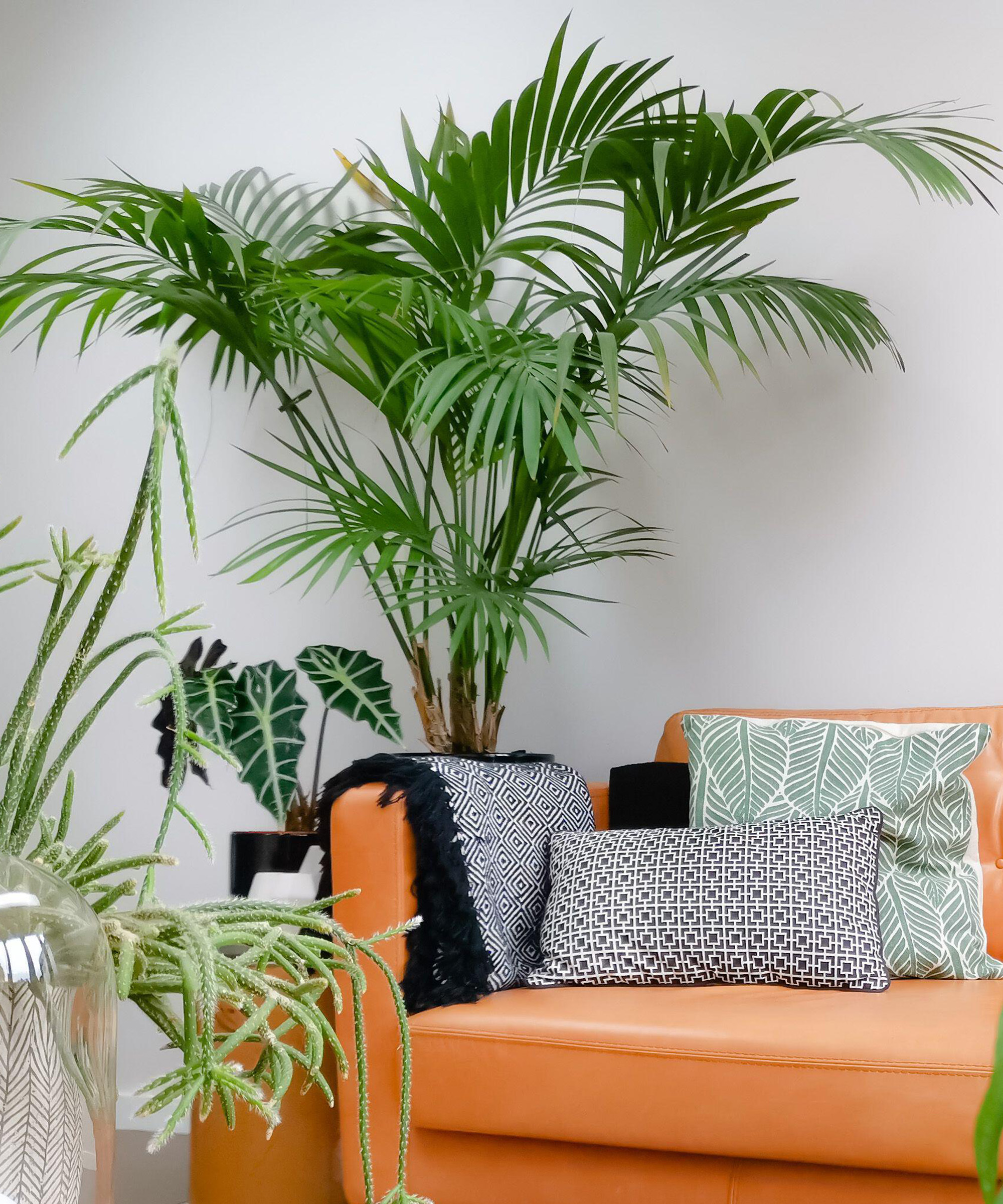
Kentia palms often include a few individual plants grouped together in one pot, which you can divide up to make new ones
The kentia palm is a fairly problem-free plant, however there are a few problems to look out for. Like many indoor plants, including the monstera, overwatering will result in root rot and yellow leaves, while the fronds may also turn yellow and wilt if the plant is underwatered.
'Brown leaf tips can also be caused by too little humidity or water, or scorch if the plant is too close to a sunny window or heater,' says Zia.
'If the compost feels bone dry, then underwatering may be the problem, so simply water it, taking care not to apply too much – also mist your plant to increase the humidity levels. Remove brown foliage if it is spoiling the look of your plant,' says Zia.
She adds that overwatered tropical plants need to be dried out, so check that your plant is in a container with drainage holes at the bottom and repot it if not. Then leave it to dry, only watering again when the top couple of inches of compost feels dry.
3. Keep them out of direct sunlight
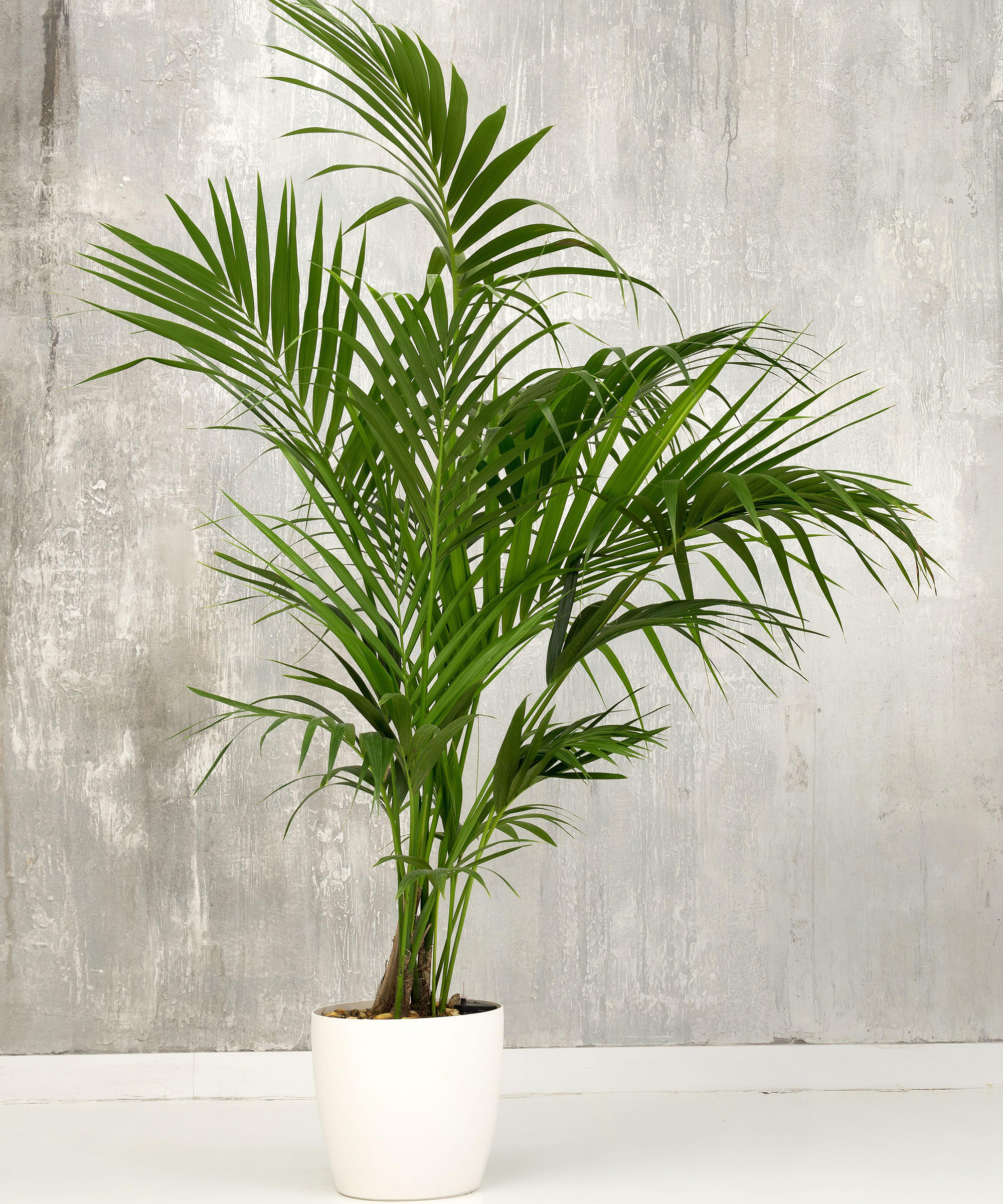
Display a large Kentia palm in a pot on the floor in a bright position, but out of direct sunlight
Like the prayer plant, kentias like a cool area in the house that receives bright but indirect light, such as a few feet away from a window.
'Keep them out of direct sunlight, which will scorch their beautiful fronds,' says Zia. 'Kentias will cope as a low light indoor plant in darker corners, but may not grow quite as well as those given a little more light.'
'Like all palms, they enjoy some humidity, and will thrive in a bathroom or kitchen, if there is space, but any room in the house will provide a good home if you’re prepared to mist them regularly.' Zia also advises keeping kentia palm plants away from radiators and heaters.
4. Check for pests

Be ready to act as soon as you notice any pests
Aside from the problems of overwatering outlined above, few pests trouble this palm. But some, including red spider mite, thrips and scale insects, may attack it.
'A healthy kentia palm care regime means your plant is less likely to succumb to pests, so aim to keep it in good condition, and check plants regularly, wiping off any insects you see on the leaves or stems to thwart an infestation,' advises Zia.
'Thrips are tiny little insects that jump around when you move the plant. They do little real damage to the palm and can be left untreated, although if you do want to learn how to get rid of thrips you can hang blue sticky strips designed to trap them in between the fronds,' she says.
Scale insects suck the sap from plants and look like small brown lumps on the leaves and stems. 'They can be removed by dipping a small paintbrush into methylated spirit and gently dabbing it on the pests. You may have to discard a heavily infested plant, so treat these pests as soon as you see them,' says Zia.
You could also try Grower's Ally Spider Mite Control Spray at Amazon.
FAQs
Can kentia palms go outside?
In cold climates, these South Pacific natives will be happy tucked up amongst your indoor garden ideas for most of the year, but they can go outside during the summer months. In the southern states of the US, kentia palms can be grown outside all year round. They are able to tolerate temperatures just below freezing for a few hours but, long-term, they need a more temperate 50˚F or more.
How big do kentia palms get?
Kentia palms can attain a height and spread of 10x6ft or more, when grown in a large pot and given ideal conditions. Keeping them in a smaller container will limit growth.
Kentia palms will add height to your indoor plant displays. The fiddle leaf fig is another statement plant with large, flat leaves which can grow to a height of 6ft indoors.
Sign up to the Homes & Gardens newsletter
Design expertise in your inbox – from inspiring decorating ideas and beautiful celebrity homes to practical gardening advice and shopping round-ups.

Teresa was part of a team that launched Easy Gardens magazine two years ago and edited it for some time. Teresa has been a Gardens Editor at Homes & Gardens, Country Homes & Interiors and Living Etc magazine since 2020 and has developed close working relationships with top garden designers, and has been exposed to an array of rich garden content and expertise.
-
 Extend the lifespan of your appliance with 5 simple but crucial washing machine maintenance tips
Extend the lifespan of your appliance with 5 simple but crucial washing machine maintenance tipsFrom cleaning the filters to keeping the door open, experts reveal the washer tips they swear by
By Andy van Terheyden Published
-
 These are the 6 must-have colors to decorate with in April 2025
These are the 6 must-have colors to decorate with in April 2025What do retro-inspired yellows and beautiful blues all have in common? They're on our hot list for the season ahead
By Sophia Pouget de St Victor Published